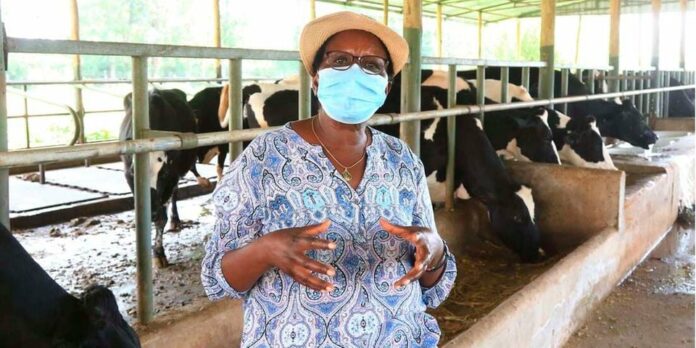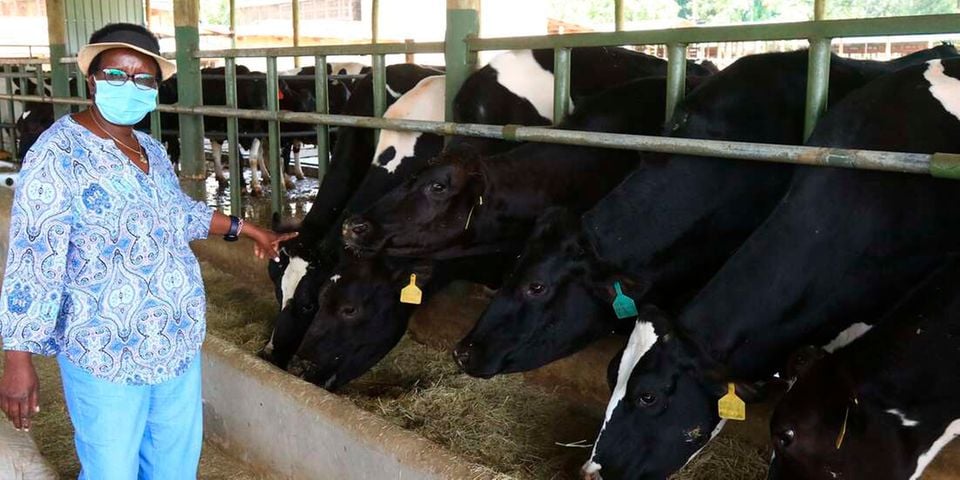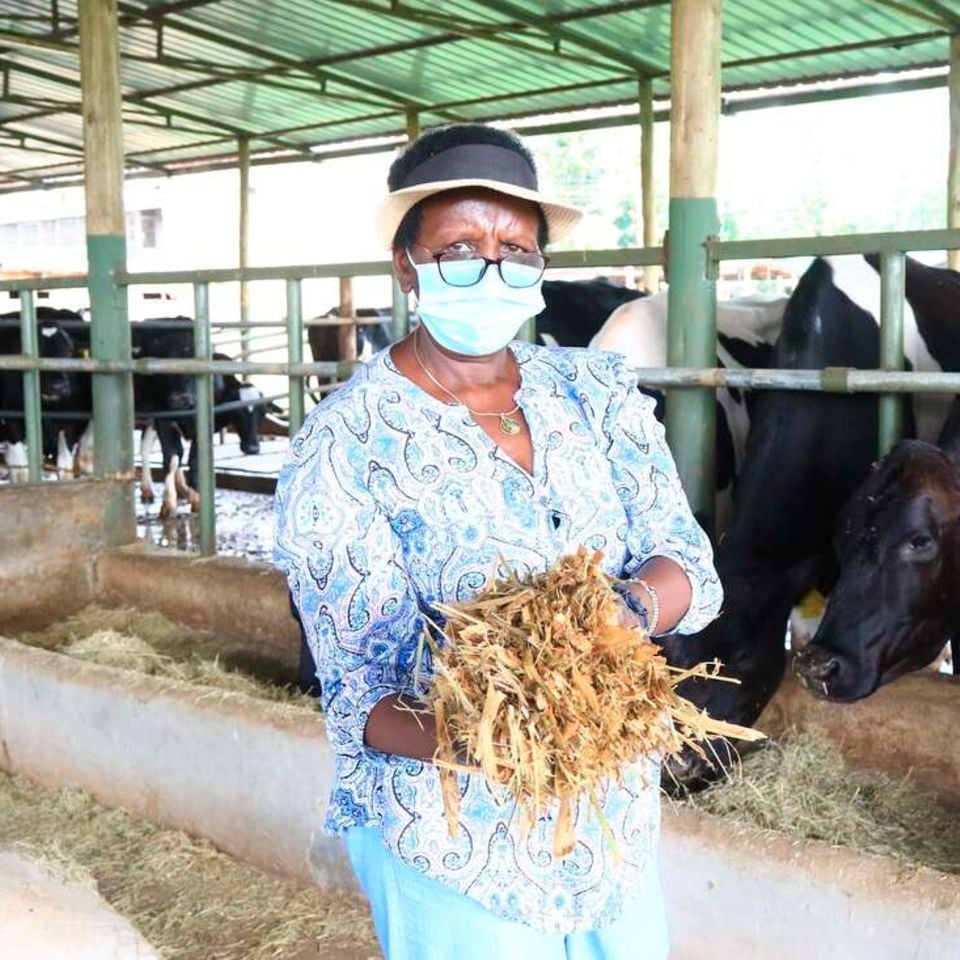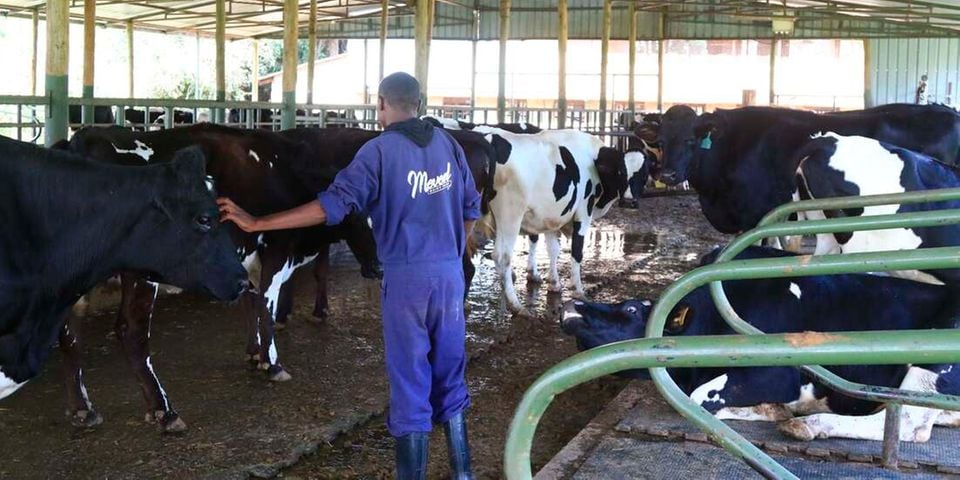Anne Mwangi is the entrepreneur managing Meved Dairy Farm located in Rukanga, Kirinyaga County.
Her thriving business has revolutionized dairy farming in an area that is semi-arid. She also keeps more than 2900 chickens, 18 bulls, 42 heifers and 90 mature cows on her farm.
In an interview, persons accessing the farm had to disinfect their feet at a footbath before trekking around it.
Anne Mwangi says that she started the farm in 2007 after relocating back to her rural home in Kirinyaga County, Rukanga. Before starting it, the former Ministry of Health employee recounted how she would always travel to Nyeri town in search of milk whenever she would visit her rural home.
From this, Anne Mwangi spotted a market niche in Kirinyaga that she opted to exploit.
“This area is generally dry thus most farmers cultivate fast-maturing crops with the little rain that comes. They didn’t keep cows ten though some have now taken up to the trade,” she states.
At the beginning of her dairy enterprise venture in 2007, Ms. Mwangi recounts that she began with one cow, which she crossbred to increase milk production. In 2008, her farm had significantly expounded and she had seven animals that were producing 150 liters of milk.
Over the years up to 2022, the farm hosts mostly Friesian animals, 42 of which are heifers, 90 mature cows (57 of them that are lactating) and 18 bulls. The lactating animals produce 1200 liters in a day.
Inside the cowsheds, her animals are organized into various sections depending on age, condition, heifers, bulls and so on.
“We stop giving the calves milk at three months and we slaughter the bulls at 14 months and sell the meat. The heifers are reared for milk production.”
Anne further adds that her heifers are reared for milk production, and are usually inseminated after attaining 350 kilograms.
At first, Anne used to sell her milk to Kenya Creameries Company (KCC) in Nyeri twice a week. She withdrew from KCC after suffering losses as KCC paid Sh. 23 during the peak season, while milk production cost stood at Sh. 32.
She instead chose to carry out value addition to the milk, and make yoghurt. She produces carious yoghurt varieties that she sells north of Sh. 180 per liter and maziwa lala with and without that she sells at Sh. 100 per liter.
Within the farm, Ms. Mwangi has constructed a dairy meal processing unit. She says it was vital that she began processing her own feeds as she had suffered losses resulting from substandard feeds.
“The feeds were expensive but not beneficial to the animals. The dairy meal quality was compromised,” she says.
Anne Mwangi imports her feed ingredients from Tanzania, as this would be inexpensive in the long run with production compensating for the high costs involved.
She says the lactating cows are milked thrice a day using machines and are fed on hay, maize silage, sweet potato vines, legumes and dairy meal.
To keep the farm running, Anne says that proper housing and planning for rainy days by growing and preserving fodder is key in ensuring that cows maintain their productivity.
“We make sure that we have fodder that lasts the animals for months to beat the erratic weather patterns,” she asserts.
According to Anne, a good shed is one that ensures animals are able to move with ease while protecting the animals from external weather conditions such as rain, wind and direct sunlight.
Each of her animals has a cow mattress that guarantees its comfort when it rests while the walking area in the cowsheds has rice husks to keep it dry and protect the cow feet.
One of her challenges is water scarcity, which she has tried to alleviate by drilling two boreholes.
“The weather pattern is terrible, we are also using the water to grow maize for silage, which brings a challenge.”
This article has been adapted from the Daily Nation, Seeds of Gold. The Daily Nation is a publication of the Nation Media Group (NMG)











